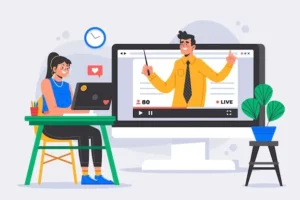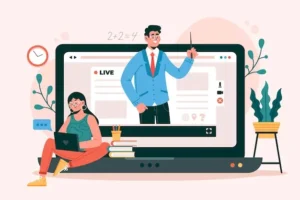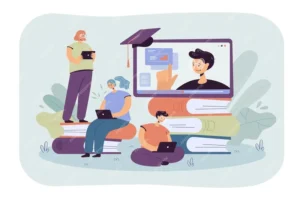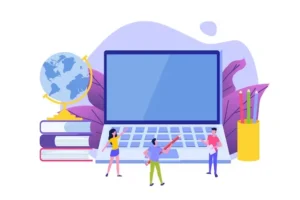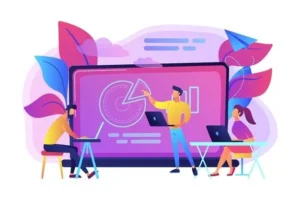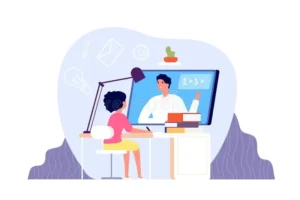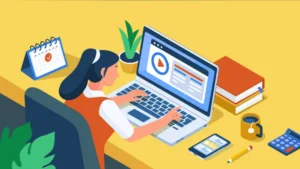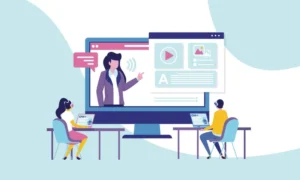Enhancing Learning with Technology: Aiding Students with Visual and Auditory Impairments
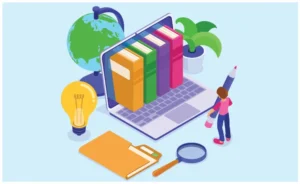
Technology plays an integral role in creating an inclusive learning environment by providing essential tools for students with visual and auditory impairments. This article explores the ways in which technology, such as screen readers and captioning tools, assists students facing these challenges and empowers them to excel in their educational journeys.
Contents
Screen Readers: An Essential Tool for the Visually Impaired
Screen readers are assistive technologies that provide an auditory interface to digital content, enabling students with visual impairments to access information presented on digital devices such as computers, tablets, or smartphones. They work by converting on-screen text and other elements into synthesized speech or Braille output. This technology empowers visually impaired students to:
- Access digital textbooks and course materials: Screen readers can read aloud digital textbooks, articles, and other educational content, allowing visually impaired students to engage with the same resources as their sighted peers.
- Navigate websites and learning management systems (LMS): Screen readers help students navigate online platforms, submit assignments, and participate in discussions on LMS interfaces, ensuring they have access to all aspects of the online learning experience.
- Utilize productivity software: Students can use screen readers to create documents, manage their schedules, and communicate with instructors and peers through email or messaging platforms.
Captions and Transcripts: Making Content Accessible to the Hearing Impaired
Captioning tools are essential for making multimedia content, such as videos and podcasts, accessible to students with hearing impairments. These tools add text-based captions or subtitles to video and audio content, allowing students to follow along with the spoken content. Here’s how they benefit students:
- Access to video lectures: Captioning enables hearing-impaired students to understand video lectures, discussions, and other instructional materials, ensuring they receive the same educational content as their hearing peers.
- Inclusivity in multimedia content: Captioning enhances the inclusivity of educational materials, benefitting not only students with hearing impairments but also those who prefer to read along while listening.
- Language support: Captioning can provide multilingual support, making content accessible to international students or those who are not fluent in the course’s primary language.
Braille Displays: Empowering Students with Visual Impairments
Braille displays are tactile devices that convert digital text into Braille, enabling students with visual impairments to read digital content through touch. These devices connect to computers or mobile devices, allowing students to access and interact with digital materials independently. The advantages of Braille displays include:
- Reading and navigating digital content: Students can access online articles, textbooks, and web content through Braille displays, fostering independent learning and research.
- Interacting with graphics and charts: Braille displays can provide tactile representations of graphics and charts, enhancing the understanding of complex visual information.
- Engaging in coding and computer science: Braille displays support students pursuing technology-related fields by enabling them to read and write code in Braille.
Speech Recognition Software: Aiding Students with Motor Impairments
Speech recognition software, often referred to as voice recognition or dictation software, allows students with motor impairments to control digital devices and compose written content using their voice. It assists these students in various ways, including:
- Hands-free interaction: Students can navigate websites, dictate text, and interact with computers without the need for a keyboard or mouse, providing an accessible means of controlling digital devices.
- Efficient note-taking: Speech recognition software facilitates efficient note-taking during lectures and discussions, ensuring that students with motor impairments can keep up with the pace of the class.
- Independence in communication: Students can use speech recognition to engage in online discussions, email correspondence, and collaborative projects, promoting communication and engagement in the virtual classroom.
Conclusion
Technology has revolutionized education by providing students with visual and auditory impairments the tools they need to succeed in online learning environments. Screen readers, captioning tools, Braille displays, and speech recognition software are just a few examples of the assistive technologies that enable these students to access, understand, and interact with digital content. By integrating these tools into online education, institutions can create more inclusive learning environments that empower all students to reach their full academic potential.

